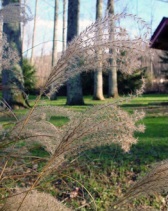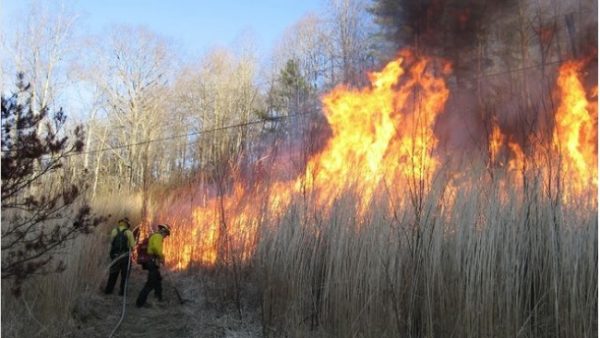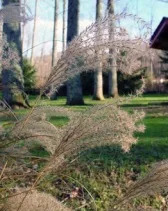
Forest Service officials are asking North Carolina residents, especially those in Madison County, to learn how to recognize and control a certain type of invasive grass that’s known to cause serious wildfire hazards.
The North Carolina Forest Service says Miscanthus sinensis, commonly referred to as pampas grass, or regionally, as “wildfire grass,” is native to eastern Asia and was brought to the U.S. more than a century ago as an ornamental landscaping plant. The grass has spread across the eastern U.S. and in North Carolina, but is most prevalent in the western region.
Miscanthus is: Tall, perennial, densely bunched grass that can grow 5 to 10 feet in height. Elongated, upright to arching leaves 3 feet long and 1 inch wide with whitish upper midrib; leaves have sharp tips and rough margins. Blades are green to variegated (light green horizontal stripes). Showy, fan-shaped, silvery to pink, terminal inflorescence that emerges in late August to early September and matures in early fall.

The Forest Service says in 2020, 80% of Madison County’s wildfires occurred in the Mars Hill Fire District where the ‘wildfire grass’ infestation is most prominent. Officials say large masses of the grass spread along roadsides and because of its high flammability, it has the potential to fuel massive wildfires.
The grass spreads mostly through wind-dispersed seeds, forming dense clumps and displacing native vegetation.
Forest Service officials provide the following tips on how to get rid of this ‘wildfire grass’:
- Roots can be dug up from the ground and destroyed.
- Repeated mowing, more than four times a year, may kill it after a few years.
- Cattle will graze the young grass if it is kept mowed.
- Herbicide sprays such as imazapyr or glyphosate can be applied during the growing season.
- Treatments may be more effective if applied for several years.
- A variety of methods may be necessary for long-term control of Miscanthus.
CLICK HERE for more.
Top photo: Chris Evans, University of Illinois,
Bugwood.org
Bottom photo: NC Forest Service





